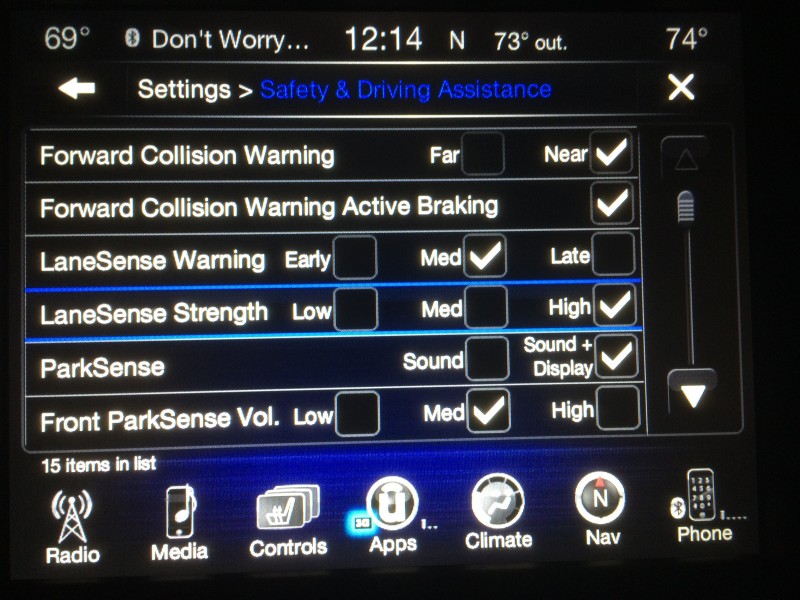Roadway departures account for a staggering number of fatalities every year.
In 2013, that number was 18,257 – more than half of all traffic fatalities recorded in the U.S. And of these, according to NHTSA:
- 47% involved collisions with trees or other off-road objects
- 25% involved head-on collisions with other vehicles
- 20% involved rollovers
By pulling over when fatigued or scheduling regular stops on long hauls, drivers are in the best position to affect (lane) change for the better.
But FCA US offers ways to enhance driver-control.

LaneSense settings are accessible through Uconnect’s 8.4-inch touchscreen display. There, drivers may choose from “early,” “medium” or “late” settings to determine when alerts occur.
LaneSense technology, available on multiple FCA US vehicles*, uses cameras to keep drivers apprised of their vehicles’ positioning. If they drift toward lane-markers in a manner consistent with driver inattention, LaneSense provides alerts and delivers automated steering inputs – both of which are driver-adjustable.
Accessible through Uconnect’s trademark 8.4-inch center-stack touchscreen display, drivers may choose from “early,” “medium” or “late” settings to determine when alerts occur. Each setting correlates to a distance from a lane-marker – center or shoulder – that is measured using cameras.
An amber light provides the alert, illuminating on the side-view mirror closest to the lane-marker in question.
Also adjustable is the subtlety of the accompanying steering input. Drivers may choose from “low,” “medium” or “high” settings – each of which is designed to get the driver’s attention, without being obtrusive.
Says Adam Chiappetta, Senior Manager-Active Safety and Driver-Assist Technologies at FCA US: “Safe driving requires a certain level of comfort. Our ability to deliver a feature that can be fine-tuned to personal preference will only enhance the effectiveness of that feature.”
So, to those drivers seeking ways to augment their efforts to stay on the straight and narrow, FCA US gets your drift.
*LaneSense technology is available on the Chrysler 200, 300 and Dodge Charger sedans, the Fiat 500X crossover and the Jeep Renegade, Cherokee, Grand Cherokee and Dodge Durango SUVs. … Using turn-signals tells the vehicle that a purposeful lane-change may be imminent. This pre-empts LaneSense activation.




